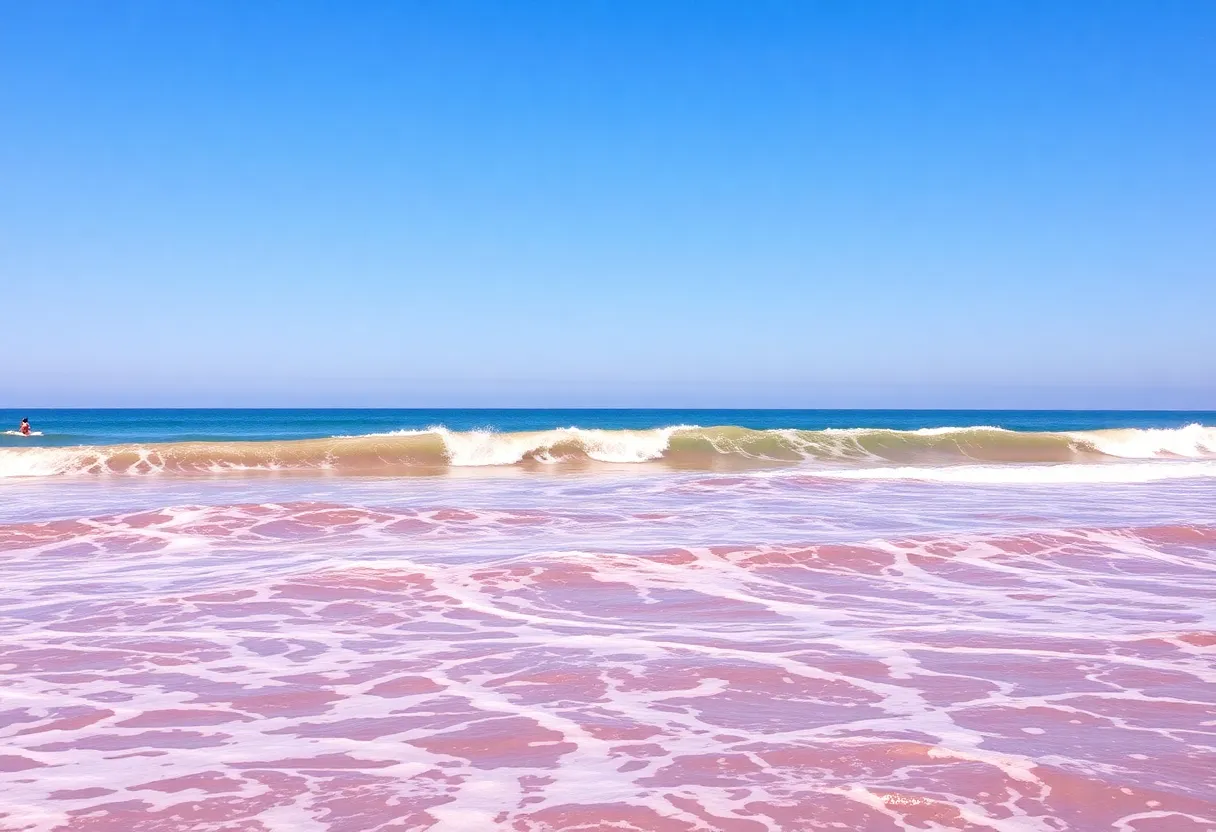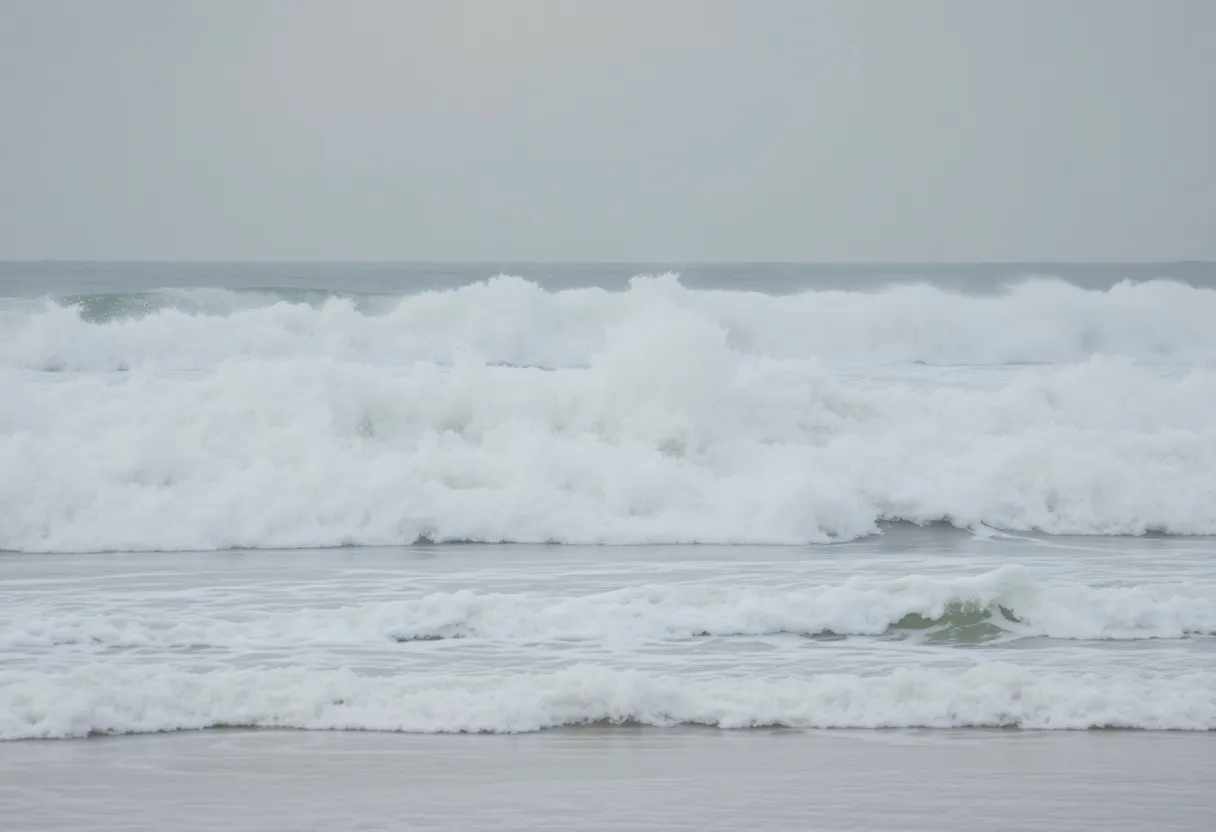News Summary
Santa Monica Bay is set to showcase vibrant pink waves for two weeks due to a research project by UCLA and the Bay Foundation. The non-toxic fluorescent dye will help study ocean circulation and water quality. Surfers and beachgoers may witness bright pink hues in the water as the dye is released in batches. Researchers assure the safety of this initiative, aiming to understand how historical breakwaters affect water quality, especially in an area known for its pollution challenges. This collaboration reflects a commitment to improving the beach for all visitors.
Exciting Changes Coming to Santa Monica Bay: Pink Waves Ahead!
Santa Monica, a beautiful coastal city known for its sandy beaches and vibrant atmosphere, is in for a colorful surprise over the next two weeks! If you’re out surfing or enjoying a beach day, keep your eyes peeled for some vibrant pink waves rolling into the Santa Monica Bay. Yes, you heard that right—pink waves!
What’s Happening?
Researchers from UCLA and the Bay Foundation kicked off a fascinating project this week that involves releasing a temporary, non-toxic dye in the bay. This isn’t your run-of-the-mill dye; it’s a fluorescent rhodamine water tracer dye, which has been used in various waterways for a long time. The main goal of this intriguing endeavor is to study ocean circulation and how it impacts water quality in the bay.
The Release of the Pink Dye
The excitement began early Monday as the researchers released the first of four batches of this fluorescent dye near the Santa Monica Pier. As surfers and beach enthusiasts frolic in the waves, they might just witness the spectacle of bright pink colors splashing around. However, the researchers indicated that during the first round, the bright pink waves didn’t show up as prominently as anticipated. Don’t worry! More dye releases are set for September 22-24 and September 30, which should amp up the colorful ambiance along the coast.
No Harm Done
Before you start to worry about the safety of the dyes or the well-being of local marine life, let’s clear this up. The dye is completely safe! It is non-toxic and poses absolutely no risk to people, animals, or the surrounding vegetation. So, beachgoers can enjoy their time by the water without any worries.
Why Is This Important?
This study isn’t just about a pretty pink show. It centers around the urgent need to understand the environmental impact of the Santa Monica breakwater. Built in the 1930s, the breakwater has seen its share of storms and is still influencing coastal hydrodynamics. It affects how water circulates in the bay, a factor that’s critically important for understanding and improving water quality—something that’s been a challenge at Santa Monica Pier.
Santa Monica’s Water Quality Woes
Over recent years, Santa Monica Pier has consistently ranked among the dirtiest beaches on the West Coast. In fact, it was recently cited as the second dirtiest! Annual evaluations by the environmental nonprofit Heal the Bay have highlighted the region’s struggles with water quality. With over $100 million invested in efforts to enhance beach water quality and curb pollution, diving into the effects of the breakwater is crucial for future beach-goers.
Keeping Track of Those Pink Waves
Researchers will keep a close eye on the dye’s movement using specialized fluorescent monitors that will remain in the bay for 24 hours. Plus, additional trackers will be anchored on buoys nearby, keeping tabs throughout the month. They’re committed to unraveling the oceanic mysteries of Santa Monica Bay, one pink wave at a time!
Community Engagement
In anticipating the public’s reaction to the bright pink shimmer, signs have been installed around Santa Monica Pier to inform and reassure everyone about this unique study. The colorful sight is not just for fun; it’s part of serious scientific inquiry aimed at improving the beloved beach for everyone.
A Collaborative Effort
This exciting research is a collaborative effort involving the City of Santa Monica, UCLA’s Samueli School of Engineering, and the Bay Foundation. With the hope that the insights gained from this study will spark improvements in the water quality and create a better beach experience, there’s a collective optimism around the project.
So whether you’re surfing, swimming, or just lounging on the beach, don’t be alarmed if you catch a glimpse of some fabulous fluorescent pink waves. It’s all part of a grand plan to understand and enhance the beautiful Santa Monica Bay!
Deeper Dive: News & Info About This Topic
HERE Resources
Additional Resources
- Los Angeles Times
- Wikipedia: Ocean Circulation
- Surf Santa Monica
- Google Search: Santa Monica Bay water quality
- Spectrum News
- Google Scholar: Santa Monica Pier environmental study
- KTLA News
- Encyclopedia Britannica: Environmental Impact
- ABC7 News
- Google News: Santa Monica beach dye study

Author: STAFF HERE HUNTINGTON BEACH
The Huntington Beach Staff Writer represents the experienced team at HEREHuntingtonBeach.com, your go-to source for actionable local news and information in Huntington Beach, Orange County, and beyond. Specializing in "news you can use," we cover essential topics like product reviews for personal and business needs, local business directories, politics, real estate trends, neighborhood insights, and state news affecting the area—with deep expertise drawn from years of dedicated reporting and strong community input, including local press releases and business updates. We deliver top reporting on high-value events such as the Huntington Beach Surf City USA Marathon, the U.S. Open of Surfing, Fourth of July celebrations at the Huntington Beach Pier, and community festivals at Huntington Beach Central Park. Our coverage extends to key organizations like the Huntington Beach Chamber of Commerce and Visit Huntington Beach, plus leading businesses in retail, hospitality, and outdoor recreation that drive the local economy. As part of the broader HERE network, including HEREAnaheim.com, HERECostaMesa.com, HERESantaAna.com, and HERELosAngeles.com, we provide comprehensive, credible insights into Southern California's dynamic landscape.





